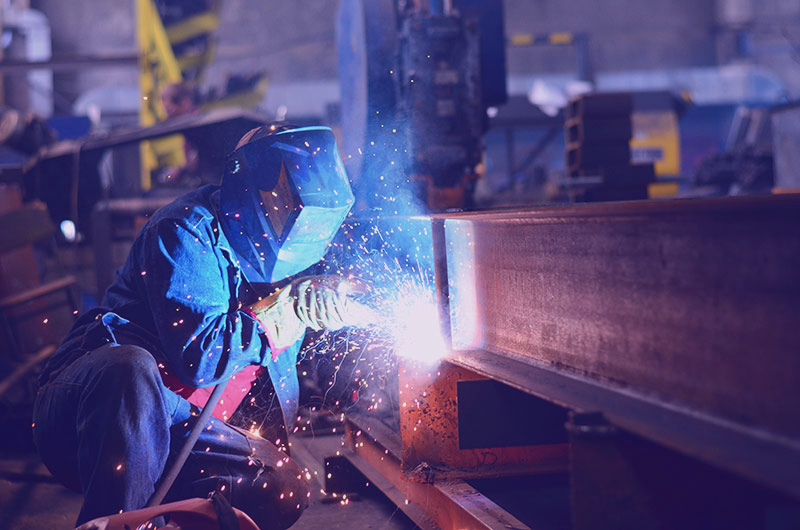According to the U.S. Bureau of Labor Statistics, the manufacturing industry saw more than 300 work-related fatalities in 2017. Within that same year, an average of 3.5 employees out of every 100 experienced an occupational injury or illness. These startling statistics serve as a rallying cry for improved workplace health and safety practices within the manufacturing industry and beyond.
While keeping workers safe and out of harm’s way is a moral imperative for any company, prioritizing workplace safety also offers significant financial advantages. Consider that the total cost of work injuries across sectors in 2017 was $161.5 billion. This pans out to an average of $39,000 per medically-consulted injury and includes medical expenses, administrative expenses, and employers’ uninsured costs, as well as wage and productivity losses. With a reported 100,000,000 lost work days in 2017 due to work-related injuries, it’s easy to see how companies can quickly fall behind on key production goals and business results.
For many leaders, improved health and safety measures hinge on the introduction of new strategies and protocols. While these efforts can provide a semblance of increasing safety, they are often less effective than anticipated. Here’s why:
Laying the Foundation for Change
When leaders rely purely on new action plans and procedures to improve safety within their organization, they’re focusing on actions and results before addressing the critical underlying factors: the experiences and beliefs driving those actions and results. According to The Results Pyramid model outlined in the bestselling book Change the Culture, Change the Game, experiences shape individuals’ beliefs, which inform actions, which in turn generate results. If an organization’s desired result is improved workplace health and safety outcomes, it’s crucial that leaders tap into the experiences and beliefs of all members of their organization in order to make meaningful change.
It’s up to leaders to start at the bottom of the pyramid, creating meaningful, positive experiences that inform the beliefs needed to drive actions that bear results. These experiences must suspend existing belief biases and foster a new set of beliefs built on the tenets of safety and accountability.
Take for example a leader who wants employees to wear eye protection goggles at all times, yet always enters the facility without them. The experience this leader is creating sends the wrong message and fosters a belief among workers that ‘we talk about safety, but we’re not serious about it.’ On the other hand another leader not only wears proper eye protection every time, but also shares a compelling story (stories can be a powerful experience) about an incident in which goggles protected an employee from severe eye damage. When leaders create memorable experiences that demonstrate the importance of safety, they cultivate beliefs rooted in the value of safety, which generates higher levels of personal accountability and effective safety-focused behaviors among all employees.
Shifting Company-Wide Cultural Beliefs
The experiences that inspire employees to take action toward greater safety in the workplace must be rooted in personal accountability. According to the New York Times bestseller The Oz Principle, accountability is a “personal choice to rise above one’s circumstances and demonstrate the ownership necessary for achieving desired results.” When employees take accountability, they commit to delivering on better safety outcomes.
Taking personal accountability stems from individual beliefs such as: my colleagues and I are working toward shared goals that will benefit the entire company and my opinions and ideas are valued, even by superiors. When employees hold these positive beliefs, they’re empowered to take ownership and remain accountable for delivering on health and safety outcomes.
To accomplish these goals, leaders must clearly communicate Key Results — the three to five meaningful, measurable, and memorable goals a company is working towards — and foster an inclusive environment in which they’re willing to listen to the safety concerns and challenges of all employees, regardless of rank.
It’s also up to leaders to create new experiences in line with their safety-oriented Key Results. The consistency with which these experiences occur anchor the desired beliefs in the hearts and minds of any work group, team, department, division, or entire organization.
Fortunately for leaders managing hundreds of thousands of employees, most people don’t need firsthand experiences to shift their beliefs. Vivid storytelling about employees who are taking accountability, implementing change, and delivering results can both create and sustain new beliefs. In tandem with this, leaders must strive to provide focused recognition of employee achievements to incentivize safety best practices and reaffirm the value of taking accountability for safety. A few words of appreciation — even just a simple “thank you” — can go a long way toward validating an employee’s sense of personal accountability.
Learning to frequently and purposefully share stories and deliver words of recognition are some of the most important, immediate steps you can take to begin shifting your company culture toward improved health and safety outcomes.
Putting Safety Into Practice
Consider this example. McElroy Manufacturing is a family-owned business dedicated to providing the highest quality fin tube and pipe fusion products. Founded in Tulsa, Oklahoma, the company has grown from a small town enterprise to a globally-recognized brand.
Due to the nature of the high-hazard industry in which employees at McElroy work, safety has always been a top priority. When one of McElroy’s initial OSHA inspections identified over 40 serious hazards, members of the leadership team knew something had to change. They developed Lean into Safety, which is less of a program and more of a cultural mindset.
“The culture of safety at McElroy is integrated into everything that we do …. Because we put such a big focus on it, employees hold each other accountable,” said Barry Calogero, Vice President of Operations at McElroy. “If an employee sees something that doesn’t seem safe, they have an obligation and a responsibility to say something and they try to get it fixed right away. They don’t say that it’s management’s responsibility — they take ownership of it.”
McElroy employees are given 30 minutes a day to clean their workstations and make short safety and improvement videos using their phones. Several of these videos are then shared at the company-wide meeting each morning, ensuring all employees are aware of a dangerous situation or a new safety best practice that has been identified.
Making the Case for Workplace Safety
It’s clear to see how McElroy’s videos are a form of both storytelling and recognition. They spread experiences that foster a belief in the importance of taking personal accountability for safety, empowering individuals to speak up and take action.
The results speak for themselves. McElroy’s incident rate has remained well below the national average for the last several years and their workmen’s compensation insurance rate is the lowest in Oklahoma, an impressive feat, as the carrier insures over 500 companies in the state.
When leaders make employee safety a top priority and integrate it into their Key Results — while creating an environment of respect and openness in the workplace — employees feel valued. This bodes well for productivity. In fact, over 90% of employees who feel valued at work say they’re more motivated to do their best, compared to 33 percent of employees who don’t feel valued by employers. These statistics back up what we at Partners In Leadership have long understood: happy employees are higher performers. Our own research confirms that when employees feel happy at work, 85% say take more initiative and nearly 50% percent care more about their work.
Further, companies that improve safety within their organizations are able to ward off thousands of dollars in cost losses related to worker’s compensation and other insurance-related factors. According to the Liberty Mutual Workplace Safety Index, workplace injuries like overexertion and falls cost U.S. businesses upwards of 13 and 17 billion a year, respectively.
All of the benefits of optimizing workplace safety come together to make the case for increasing accountability within the manufacturing sector and beyond. When employees uphold a sense of personal accountability at work, they’ll do whatever it takes to protect not only their own wellbeing, but everyone else’s. At the same time, they contribute to improved performance, driving their organization’s bottom lines and promoting increased organizational success.




